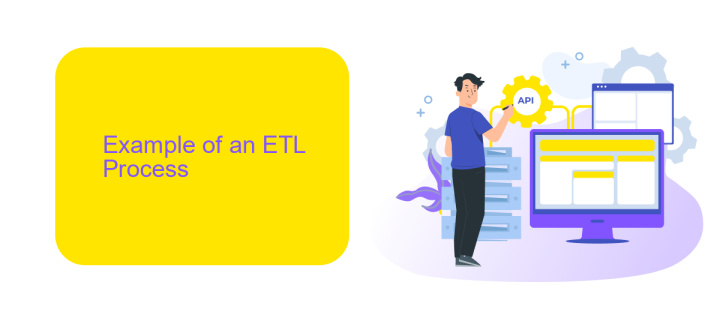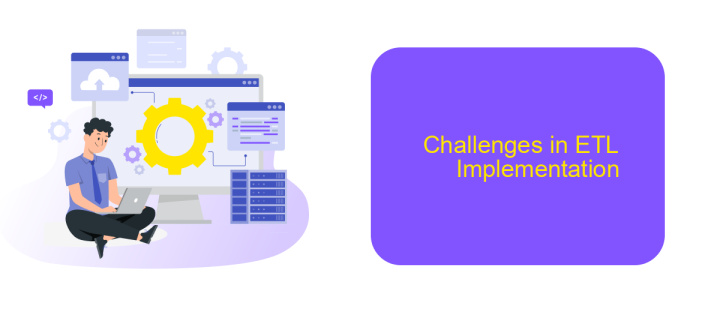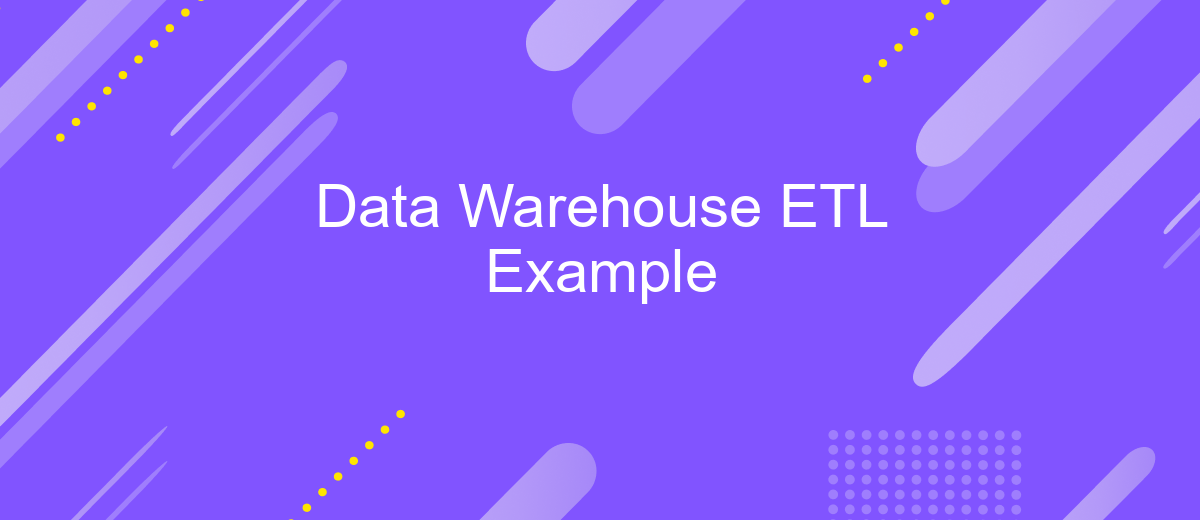Data Warehouse ETL Example
In today's data-driven world, efficient data management is crucial for businesses to thrive. A Data Warehouse (DW) serves as a centralized repository for integrated data from various sources, enabling comprehensive analysis and reporting. This article explores a practical example of the ETL (Extract, Transform, Load) process, which is essential for populating and maintaining a robust Data Warehouse.
Introduction
In today's data-driven world, businesses rely heavily on efficient data management systems to make informed decisions. A Data Warehouse (DW) serves as a centralized repository for all data collected by an organization, enabling data analysis and reporting. The Extract, Transform, Load (ETL) process is crucial in ensuring that data from various sources is accurately integrated into the DW.
- Extract: This step involves gathering data from different sources, such as databases, CRM systems, and flat files.
- Transform: The collected data is then cleaned, formatted, and transformed to meet the business requirements.
- Load: Finally, the transformed data is loaded into the DW for analysis and reporting.
Implementing an efficient ETL process can be challenging, but tools like ApiX-Drive simplify the integration of various data sources. ApiX-Drive offers seamless connectivity and automation features, ensuring that data is consistently and accurately transferred to your DW. By leveraging such tools, businesses can focus on analyzing data rather than dealing with integration complexities.
Example of an ETL Process

An ETL process typically begins with the extraction phase, where data is collected from various sources such as databases, APIs, and flat files. For example, a retail company might extract sales data from its point-of-sale system, customer data from a CRM, and inventory data from a warehouse management system. These disparate data sources are then consolidated into a staging area where they can be cleaned and transformed.
During the transformation phase, the raw data is cleaned, normalized, and formatted to meet the requirements of the target data warehouse. This might involve removing duplicates, handling missing values, and converting data types. Tools like ApiX-Drive can be particularly useful for automating these integrations and transformations, ensuring that data flows smoothly between systems. Finally, in the loading phase, the transformed data is loaded into the data warehouse, where it can be used for reporting and analysis. This structured approach ensures that the data is accurate, consistent, and readily available for business intelligence activities.
Benefits of Using an ETL Tool

Using an ETL (Extract, Transform, Load) tool offers multiple benefits for managing and optimizing data processes within a Data Warehouse. These tools streamline the complex task of data integration, making it easier to handle large volumes of data from various sources.
- Efficiency: ETL tools automate the data extraction, transformation, and loading processes, significantly reducing manual effort and time.
- Data Quality: They ensure high data quality by performing data cleansing and validation during the transformation phase.
- Scalability: ETL tools can handle increasing amounts of data, making them suitable for growing businesses.
- Consistency: They provide consistent data integration, ensuring that data from different sources is uniformly processed and stored.
- Integration: Services like ApiX-Drive facilitate seamless integration with various data sources, enhancing the overall efficiency of ETL processes.
Incorporating an ETL tool into your data management strategy can lead to more accurate analytics and better decision-making. By automating repetitive tasks and ensuring data integrity, these tools enable organizations to focus on deriving actionable insights from their data.
Challenges in ETL Implementation

Implementing an ETL (Extract, Transform, Load) process in a data warehouse environment is fraught with numerous challenges. One of the primary issues is data quality, as inconsistent or inaccurate data can lead to flawed analytics and decision-making. Ensuring data integrity during the extraction and transformation phases is crucial but often complex.
Another challenge is the scalability of the ETL process. As data volumes grow, the ETL system must be able to handle increased loads without compromising performance. This requires robust architecture and efficient data processing techniques, which can be difficult to implement and maintain.
- Data quality and integrity
- Scalability and performance
- Complexity of data transformations
- Integration with diverse data sources
- Monitoring and error handling
Integration with various data sources is another significant hurdle. Tools like ApiX-Drive can simplify this process by providing seamless connectivity and automated data flows between different systems. However, continuous monitoring and error handling remain essential to ensure the ETL process runs smoothly and accurately. Addressing these challenges effectively requires a combination of the right tools, skilled personnel, and meticulous planning.


Conclusion
In conclusion, the process of extracting, transforming, and loading (ETL) data into a Data Warehouse is a critical component for effective data management and analysis. By following a structured ETL workflow, organizations can ensure that their data is accurate, consistent, and readily available for business intelligence and decision-making. The integration of various data sources into a unified repository allows for comprehensive insights and supports strategic initiatives.
Moreover, leveraging tools like ApiX-Drive can significantly streamline the integration and automation process. ApiX-Drive facilitates seamless connectivity between different applications and data sources, ensuring that data flows smoothly into the Data Warehouse. This not only saves time and reduces manual effort but also enhances the overall efficiency and reliability of the ETL process. By adopting such advanced solutions, organizations can optimize their data management practices and gain a competitive edge in their respective industries.
FAQ
What is a Data Warehouse ETL process?
Why is ETL important for a Data Warehouse?
What are the main stages of the ETL process?
How can I automate the ETL process?
What are the challenges of implementing an ETL process?
Time is the most valuable resource in today's business realities. By eliminating the routine from work processes, you will get more opportunities to implement the most daring plans and ideas. Choose – you can continue to waste time, money and nerves on inefficient solutions, or you can use ApiX-Drive, automating work processes and achieving results with minimal investment of money, effort and human resources.

